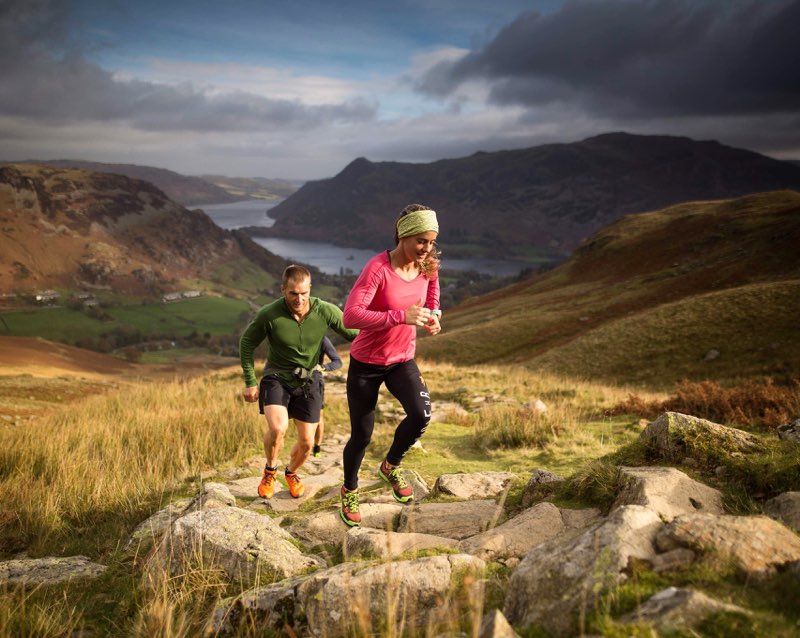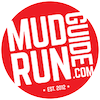“OCR racing is essentially like trail running with obstacles. Running on a track may help you to run faster, but you’ll never come across a track in the middle of your race! It’s beneficial to train on the terrain you’ll be racing on, and to learn the techniques that come along with it, such as looking ahead at the trail to chose your footing accordingly. I find running on the trail is also so peaceful, and definitely a more fun way to train than running circles on a track.” Lindsay Webster
Obstacle Course Racing: it's basically trail running with obstacles along the way.
I share Lindsay’s sentiments because, although that's not an exact definition of the sport, it's usually how I begin explaining what obstacle course racing is to those who are new to the idea of it and before I begin rambling on and on about how amazing it is and why everyone should give one a try.
One of the many reasons I fell in love with obstacle course racing was because of the courses and views I got to see and experience during each race I ran. My love for the outdoors and nature was a perfect reason to be out on a course weekend after weekend, sprinting up and down steep hills and challenging mountains however I quickly realized after my first couple of races that if I was going to continue racing I would have to become a better runner not just stronger on obstacles.
I wasn't a runner prior to getting into OCR in 2012, but my friend Solo, who is also an OCR athlete, introduced me to a local trail race series up here in Ontario called 5 Peaks Trail Running Series. I ran my first official trail run that same year. It was a cold, rainy and windy fall day and the race venue was packed with runners from the Ontario trail running community. We ran under those conditions and I remember it was muddy and technical, it was exactly like obstacle course racing but without the obstacles, and I loved every minute of it!
Trail running was then quickly incorporated into my own training program to get me ready for the 2013 season. Even though I'm not an elite racer or a fast runner it helped me become a better OCR athlete and to finish strong. It strengthened my endurance and most importantly, my legs.
So why and how does trail running contribute to making you a better OCR athlete?
Well, according to Coach Yancy Culp from Yancy Camp, which provides people in the Obstacle Course Racing community with an avenue to team up with elite OCR athletes trained by him has this to say:
“Probably the main reason I feel trail running is very beneficial to OCR is you're going to be out on terrain and courses, the exact type of terrain and courses you're going to see in obstacle course races. Most obstacle course races are going to be out in the woods, in the forests and sides of mountains and hills and single track trails and that's exactly what we face when we trail run so the coordination, the balance, all the additional benefits that come from trail running that we don't get running on the road, on the track or treadmill is just going to be extremely beneficial to OCR. Minus the obstacles the trail mimics exactly what OCR throws at us.”
By now almost all OCR athletes incorporate trail running into their training programs. They focus on running and speed just as much as they focus on endurance, obstacle course completion, grip training and strength training. The field just keeps getting faster and faster year after year with so many strong runners because of this. Because obstacle course racers are known for being well-rounded athletes, all obstacle course racers should train not only for all distances but all types of terrain including elevation and weather.
Although some elite athletes like Ryan Atkins “segued from running and biking on trails into doing OCR's” and Lindsay Webster “always did trail running as cross-training for other sports. Previously I would have classified myself as a competitive cross-country skier or mountain biker, but I always did trail running as training for those sports and always joined my high school or university varsity xc running team” and both absolutely credit their trail running background for the strong OCR athlete's that they are today there are other athletes like Morgan McKay who took up trail running after they got into the sport.
Morgan McKay says she “wasn't really athletic until I tried a Spartan Race, I loved it so much I started working out, I ran occasionally….but like maybe once a month….I noticed a huge difference in my performance once I added trail running. I became a more efficient runner. I really enjoy being outside, I find it makes training way more enjoyable which keeps me motivated to keep going with it. Since most of the races I do are on trails, it makes sense to train that way.”
Morgan also credits trail running for making her “become a stronger OCR athlete. Once I added in trail running, I became a lot stronger on the hills and my endurance improved.”
For those new to the sport, I encourage you to take up trail running. Trail running is a crucial part of obstacle course racing and should be incorporated into every OCR athlete's training program, whether you are an elite athlete or a weekend warrior. It will provide great strength training benefits for your legs because it requires agility, balance and coordination especially when running on more technical terrain like we experience at almost all obstacle course races.
The wonderful thing about taking up trail running as part of your OCR training is you probably already have the equipment required: a good pair of trail shoes with grip. I would suggest is the following 3 things:
1) Find some local trails and hills to train on by yourself or with a group of friends who are also training for an OCR
2) Join a local trail running group they usually offer an introduction to trail running program or
3) Register for a local trail race and run it as part of your training schedule. Use it also to run different courses and get yourself familiar with the trail running community.
Otherwise, remember to respect the trails, run happy and just have fun out there.



Leave A Comment